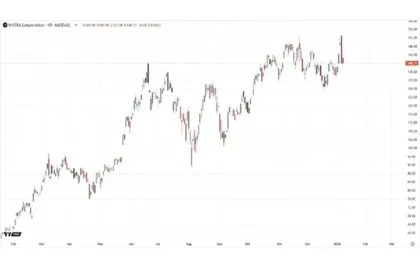Inefficiency is a common problem in industrial facilities, but one that Internet of Things (IoT) technologies can solve. The best results will come from determining the biggest causes of slowdowns and all related contributors. How much would a process change make things more efficient? Is it worthwhile to try that first or invest in technological solutions immediately?
People should also decide on their budgets how extensively they will include the IoT in their current workflows. Many industrial leaders want proof of effectiveness before substantially scaling up their infrastructure or applications. However, learning about the potential benefits of IoT in manufacturing can increase their motivation.
Improving Efficiency With Real Time Visibility
IoT sensors can show users what is happening in their industrial environments anytime. That information helps leaders track trends and make smarter choices about upgrading equipment, responding to a client’s massive order or hiring more team members.
In one example, a global glass manufacturer started using IoT technologies to move away from manual monitoring activities. The company makes 1,375 tons of glass units daily on 60 continuously operating production lines. Before using the Internet of Things, the business tracked data when people gathered it by hand and entered it into physical logbooks.
However, since the collection and analysis processes took so long this way, decision-makers needed more timely insights to help them respond to changing production challenges. They adopted plant-wide IoT sensors, allowing for capturing quality-related metrics for each manufacturing stage and gaining efficiency statistics.
As of July 2024, the people at the company had analyzed more than 1 billion data points from 4,000 sensors and pieces of equipment. The increased information allowed this industrial business to enhance efficiency while improving quality.
Including the IoT in Digital Transformation Strategies
Many leaders realize the IoT significantly influences their intentions to digitally transform specific processes or workflows.
Additionally, they explore complementing technologies, such as artificial intelligence and digital twins. Those options allow companies to get more done with fewer people. Just one 40,000-square-foot factory may need at least 500 workers if leaders do not also deploy technology. However, a lights-out factory in China gets the job done with just 20 robots.
At one electric vehicle production plant in Singapore, the IoT, robots and artificial intelligence are central to helping the company innovate and keep production levels high. The company produces tens of thousands of customized electric vehicles annually, revealing numerous forward-thinking options to potential customers and other stakeholders. Decision-makers say that AI, the IoT and robots will collectively allow the enterprise to operate as a human-centered manufacturing facility that can respond to changes and enable efficiency and customization.
Statistics indicate the company’s robots handle 50% of daily tasks at the seven-story plant. They also tackle 60% of needs related to transport, component processing and orders.
Making Equipment Work More Effectively
One of the benefits of IoT in manufacturing is that it can reduce downtime. Leaders become interested in it while evaluating ways to maximize assembly line effectiveness and asset utilization. Some calculate metrics such as overall equipment effectiveness, identifying the genuinely effective operating time percentage.
IoT sensors can gather data about critical machines, warning plant managers of abnormal temperatures, unusual vibration patterns or other characteristics that could indicate impending failure. They can also collect details about overall operating hours versus idle time and other figures that curb inefficiencies.
One global industrial company aimed to achieve a 10-percentage-point boost in overall equipment effectiveness while reducing per-unit costs by 30%. Those aspirations came when the businesses needed to ramp up production levels to more than double the current levels over the next three years, producing 50 million additional parts. The organization met these aims, and advanced technologies enabled the outcome. Reducing unexpected equipment downtime is an excellent way to increase efficiency.
Enjoy the Benefits of IoT in Manufacturing
These are some of the many benefits of IoT in manufacturing that convince decision-makers to initiate or intensify their investments in the technology. No matter your company’s size or type, there is a good chance connected technologies can eliminate many inefficiencies.










